This document explains the steps involved in securing the communication of roaming users using Secure Gateway Server. Secure Gateway Server can be used when roaming agents (on the mobile devices and desktops) access the server through the internet. It prevents the exposure of the server directly to the internet by serving as an intermediate server between the product server and roaming agents.This ensures that the product server is secure from risks and threats of vulnerable attacks.
For a step by step demonstration video on how to configure secure gateway server, click here.
Note:
Secure Gateway Server is a component that will be exposed to the internet. The Secure Gateway Server acts as an intermediate server between the managed roaming agents and the central server. All communications from the roaming agents will be navigated through the Secure Gateway. When the agent tries to contact the central server, Secure Gateway server receives all the communications and redirects to the central server.
Note: Map your Secure Gateway's public IP address and product server's private IP address to a common FQDN in your respective DNS. For example, if your FQDN is "product.server.com", map this to both your Secure Gateway and central server IP address. By this mapping, the WAN agents of roaming users will access the central server via Secure Gateway (using internet) and the agents within the LAN network will directly reach central server, hence leading to quicker resolution. Accessing webconsole/management console will be restricted when accessed through Internet for security purposes when SGS is installed.
You can install Secure Gateway Server on any of these Windows operating system versions:
The hardware requirements for Secure Gateway Server include the following :
To introduce Secure Gateway based communication to Central Server, follow the steps given below:

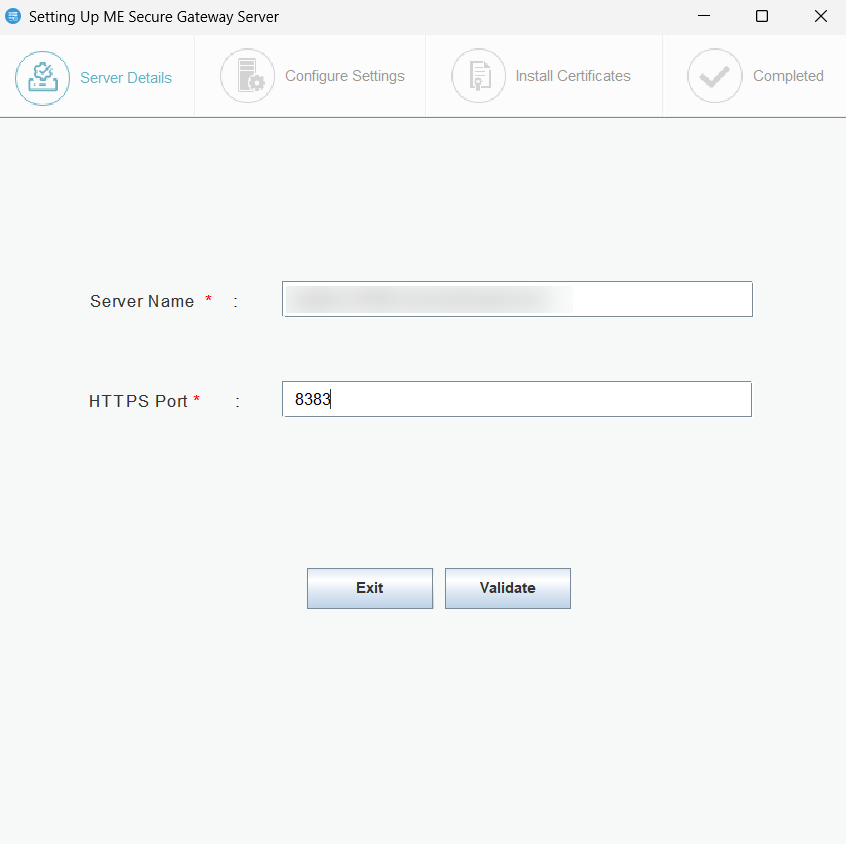
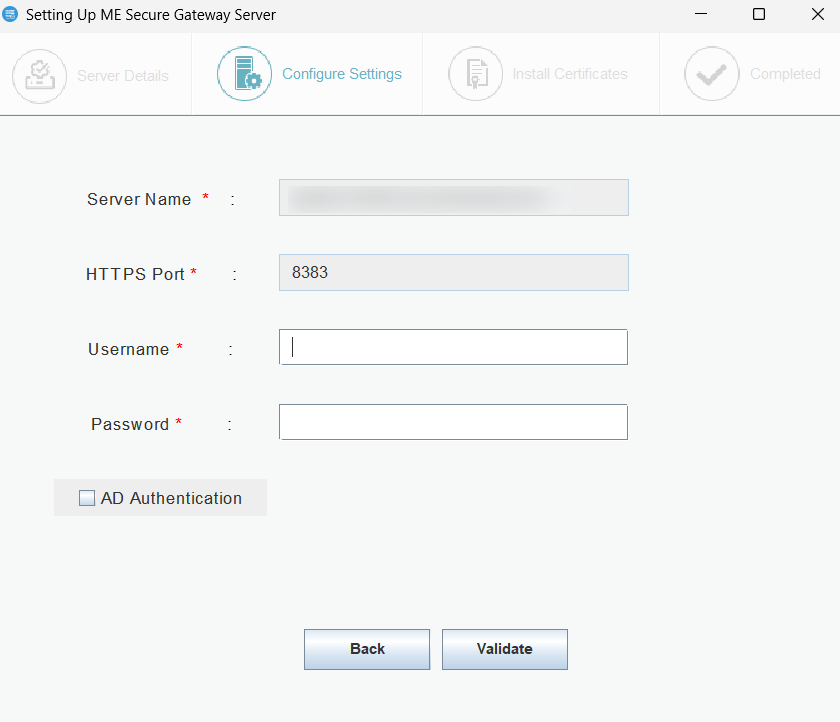
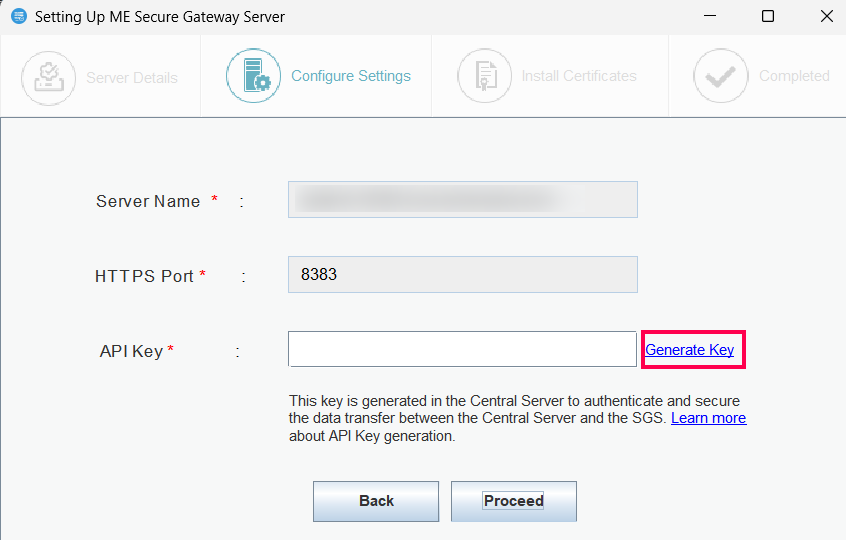
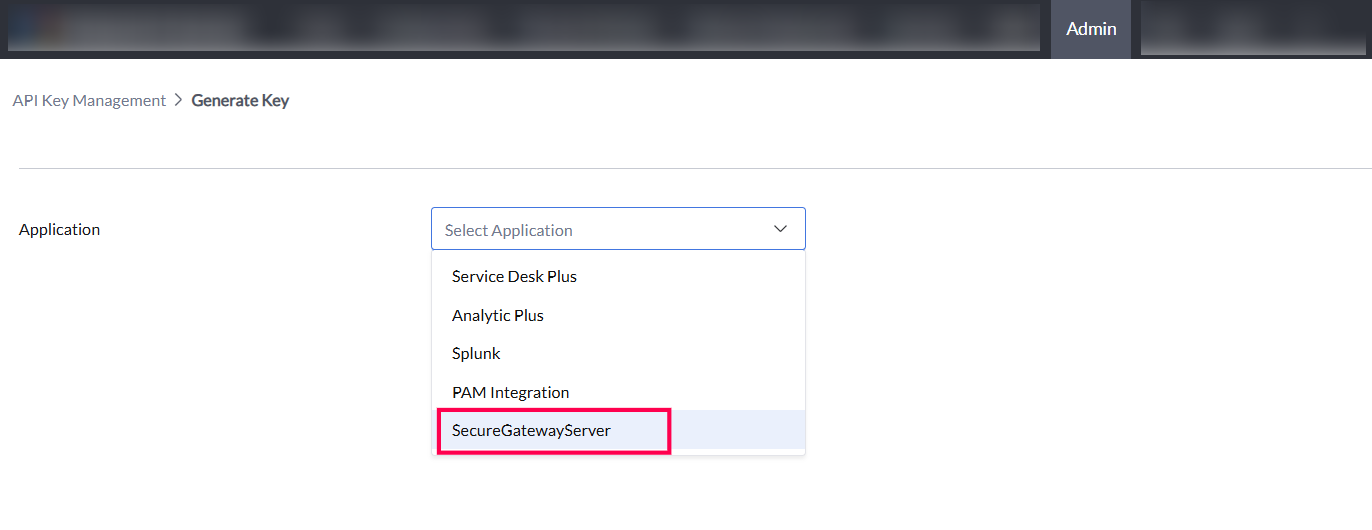
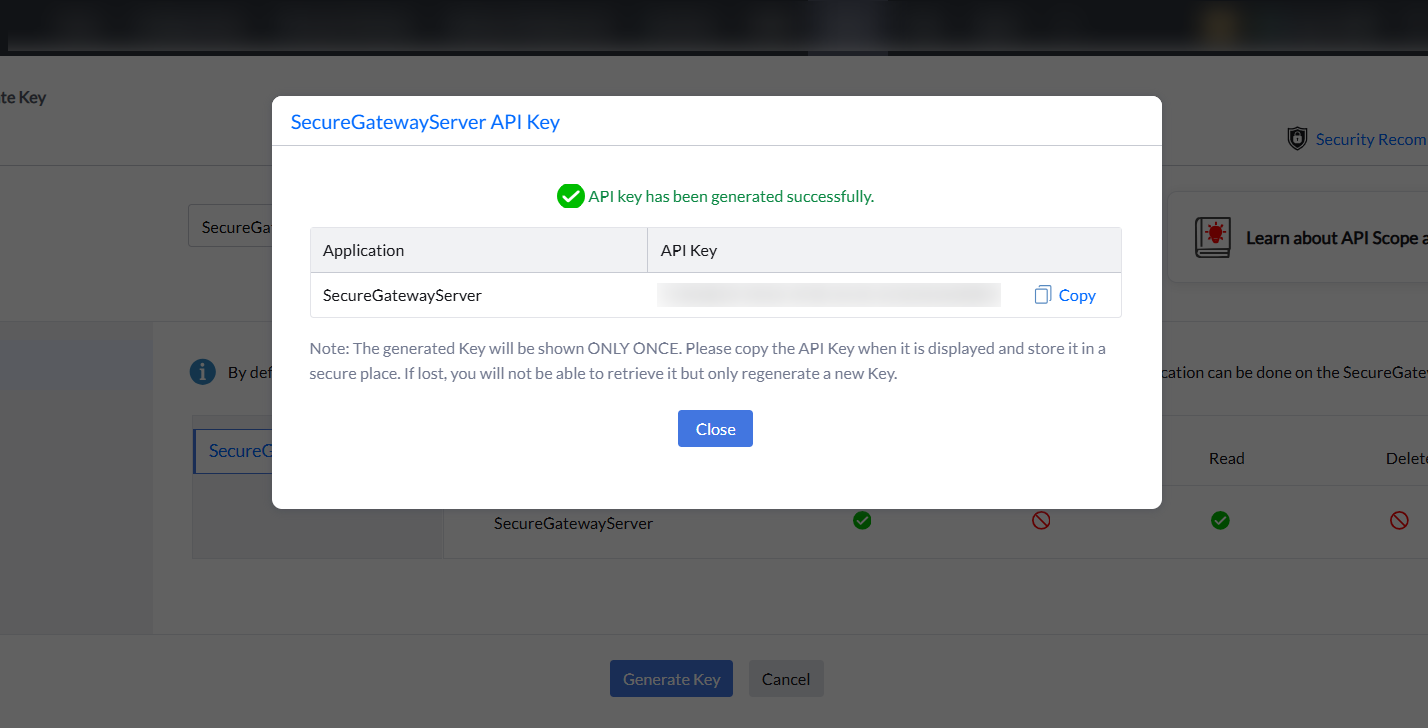
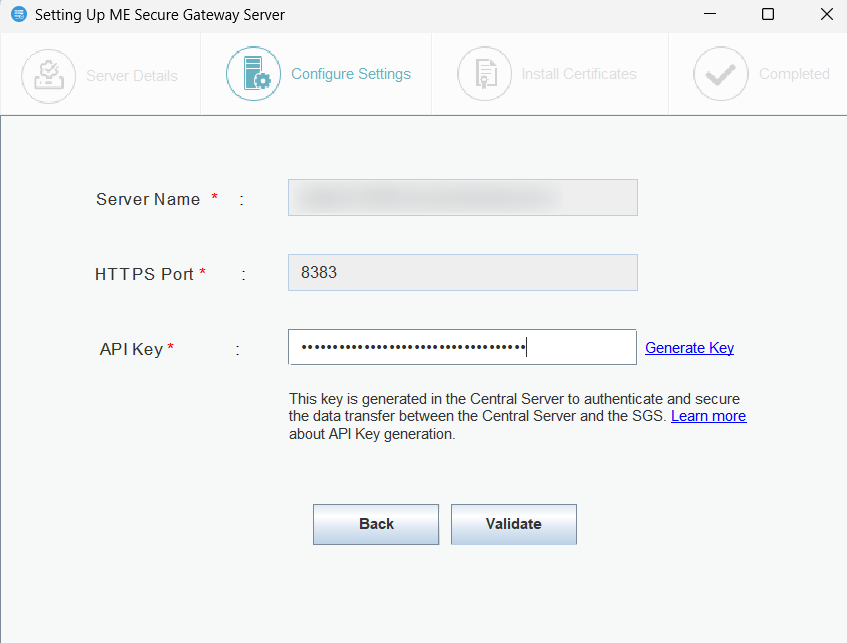
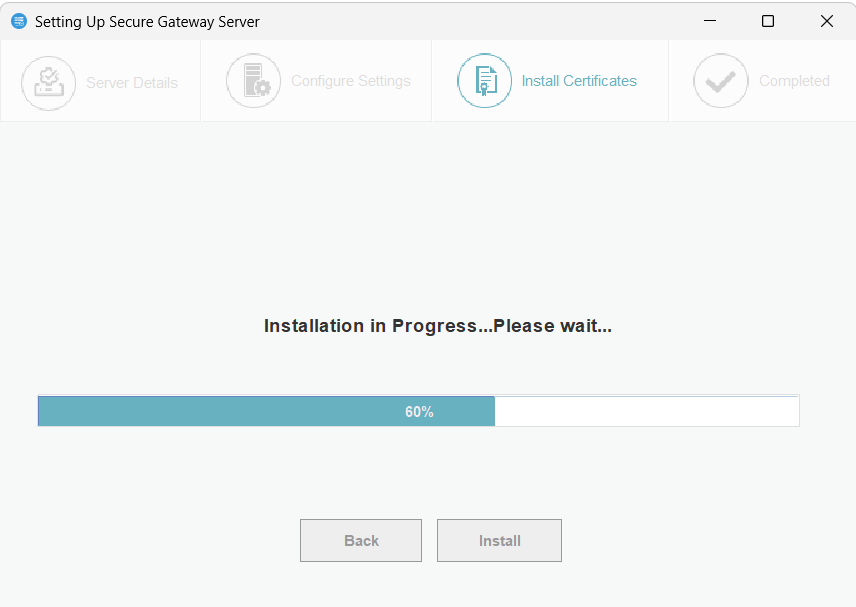

Ensure that you follow the steps given below:
Ensure that the following ports are open on the firewall to allow the WAN agents to communicate with the Secure Gateway.
| Port | Type | Purpose | Connection |
| 8383 | HTTPS | For communication between the WAN agent/Distribution Server and the Central server using Secure Gateway. | Inbound to Server |
| 8027 | TCP | To perform on-demand operations | Inbound to Server |
| 8443 | HTTPS | Web socket port used for remote control, chat, system manager etc. | Inbound to Server |
You have now secured communication between Central server, WAN agents and roaming users.
When importing an SSL certificate, if the root certificate is modified, SGS needs to be reconfigured.
When SGS is upgraded, you need to reconfigure SGS.
If Admin credentials used to configure the SGS are modified, SGS needs to be reconfigured.(Before the build no:11.4.2528.1)